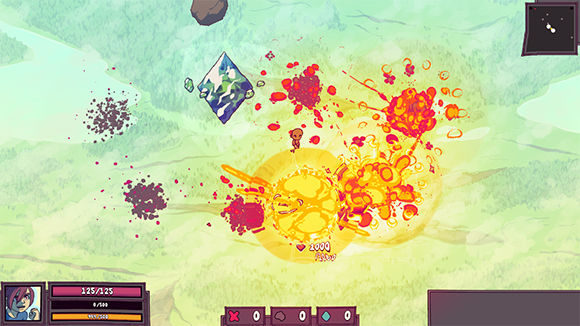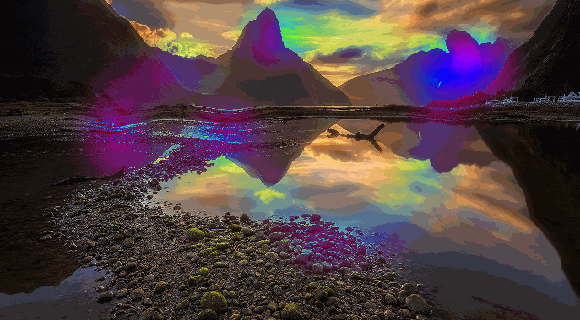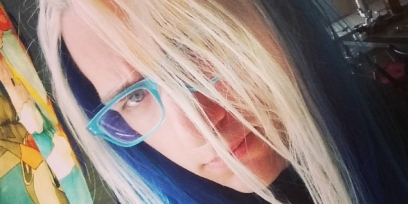Dev Log: Shader Follow Up
My last post went over some of my recent shader developments with displacement maps, and using gradient maps to recolor portions of the screen. I had a couple of questions of what exactly was going on behind the scenes with the render textures that I was using to tell the shader how to actually manipulate the image, so I thought I would address that now!
Here's an example image from the game with a lot of explosions going on:

Each explosion has a shockwave ripple coming out of it which distorts the area around it. The explosion also changes the color of the screen around to a gradient map with pink and yellow. This makes it look like an intense heat, or something.
For reference, here's the shader again (it's been slightly modified since yesterday.)
From this point on there's going to be a lot of images and some hefty animated gifs, so I'll hide the rest of this post behind the read more button!
Here's an example image from the game with a lot of explosions going on:

Each explosion has a shockwave ripple coming out of it which distorts the area around it. The explosion also changes the color of the screen around to a gradient map with pink and yellow. This makes it look like an intense heat, or something.
For reference, here's the shader again (it's been slightly modified since yesterday.)
uniform sampler2D texture;
uniform sampler2D displacementMap;
uniform sampler2D paletteMap;
uniform sampler2D gradientMap;
void main() {
// Get the pixels off of the maps.
vec4 displacementPixel = texture2D(displacementMap, gl_TexCoord[0]);
vec4 palettePixel = texture2D(paletteMap, gl_TexCoord[0]);
// Read the pixel from the displaced position.
vec2 pos = gl_TexCoord[0];
pos.x += (displacementPixel.r * 2.0 - 1.0) * 0.025;
pos.y -= (displacementPixel.g * 2.0 - 1.0) * 0.025;
// Get the displaced pixel.
vec4 pixel = texture2D(texture, pos);
// Proper grayscale conversion.
float gray = dot(pixel.rgb, vec3(0.299, 0.587, 0.114));
// Get the color from the gradient.
float gradientPos = mod(gray + palettePixel.g, 1);
// Get the actual color from the gradient.
vec4 gradientMapPixel = texture2D(gradientMap, new vec2(gradientPos, palettePixel.r));
// Mix the gradient with the pixel color based on the palette pixel.
pixel = mix(pixel, gradientMapPixel, palettePixel.a);
// Apply the final color multiplied by the gl color.
gl_FragColor = pixel * gl_Color;
}
12 Comments


















